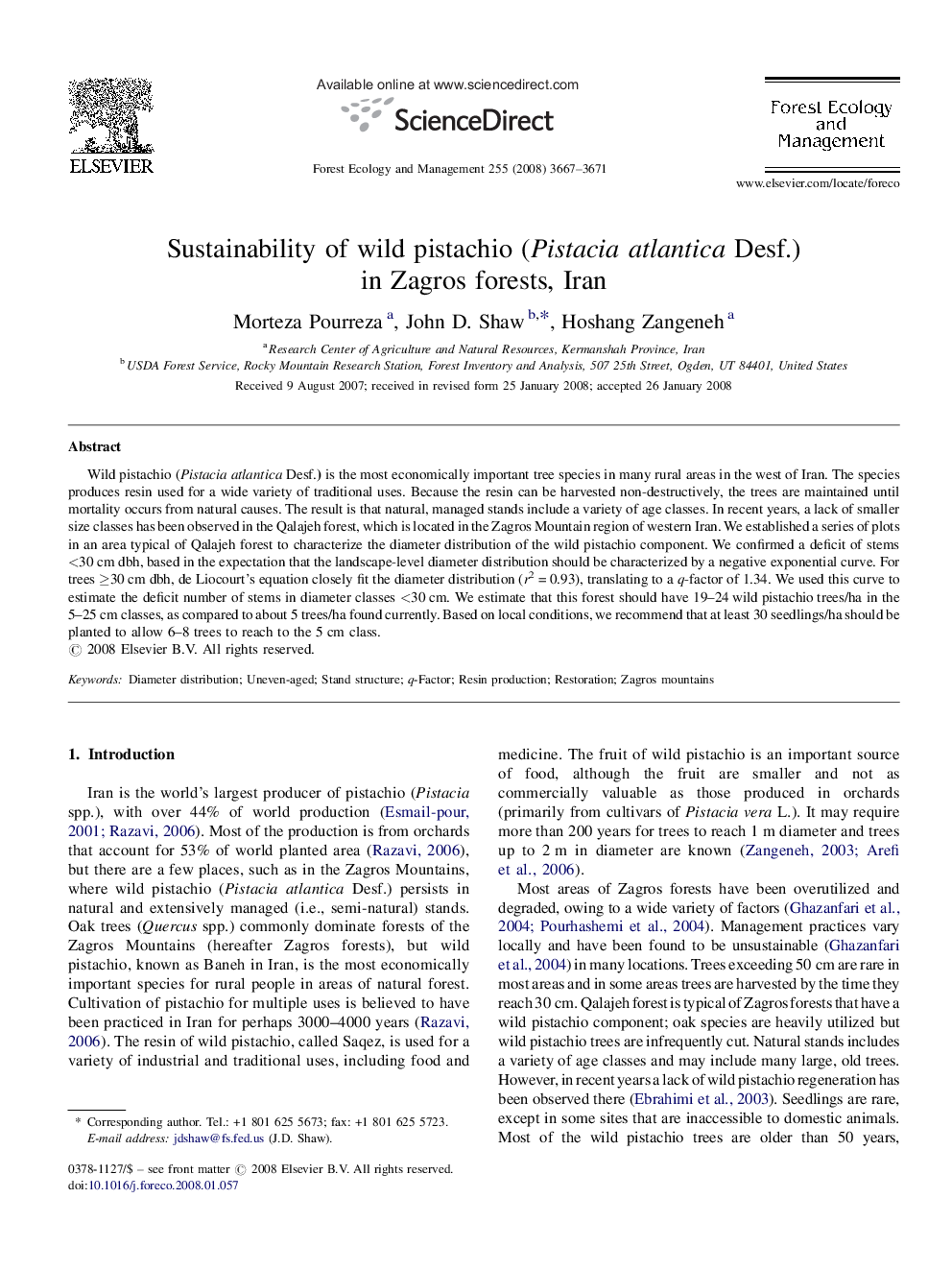| Article ID | Journal | Published Year | Pages | File Type |
|---|---|---|---|---|
| 89309 | Forest Ecology and Management | 2008 | 5 Pages |
Wild pistachio (Pistacia atlantica Desf.) is the most economically important tree species in many rural areas in the west of Iran. The species produces resin used for a wide variety of traditional uses. Because the resin can be harvested non-destructively, the trees are maintained until mortality occurs from natural causes. The result is that natural, managed stands include a variety of age classes. In recent years, a lack of smaller size classes has been observed in the Qalajeh forest, which is located in the Zagros Mountain region of western Iran. We established a series of plots in an area typical of Qalajeh forest to characterize the diameter distribution of the wild pistachio component. We confirmed a deficit of stems <30 cm dbh, based in the expectation that the landscape-level diameter distribution should be characterized by a negative exponential curve. For trees ≥30 cm dbh, de Liocourt's equation closely fit the diameter distribution (r2 = 0.93), translating to a q-factor of 1.34. We used this curve to estimate the deficit number of stems in diameter classes <30 cm. We estimate that this forest should have 19–24 wild pistachio trees/ha in the 5–25 cm classes, as compared to about 5 trees/ha found currently. Based on local conditions, we recommend that at least 30 seedlings/ha should be planted to allow 6–8 trees to reach to the 5 cm class.
